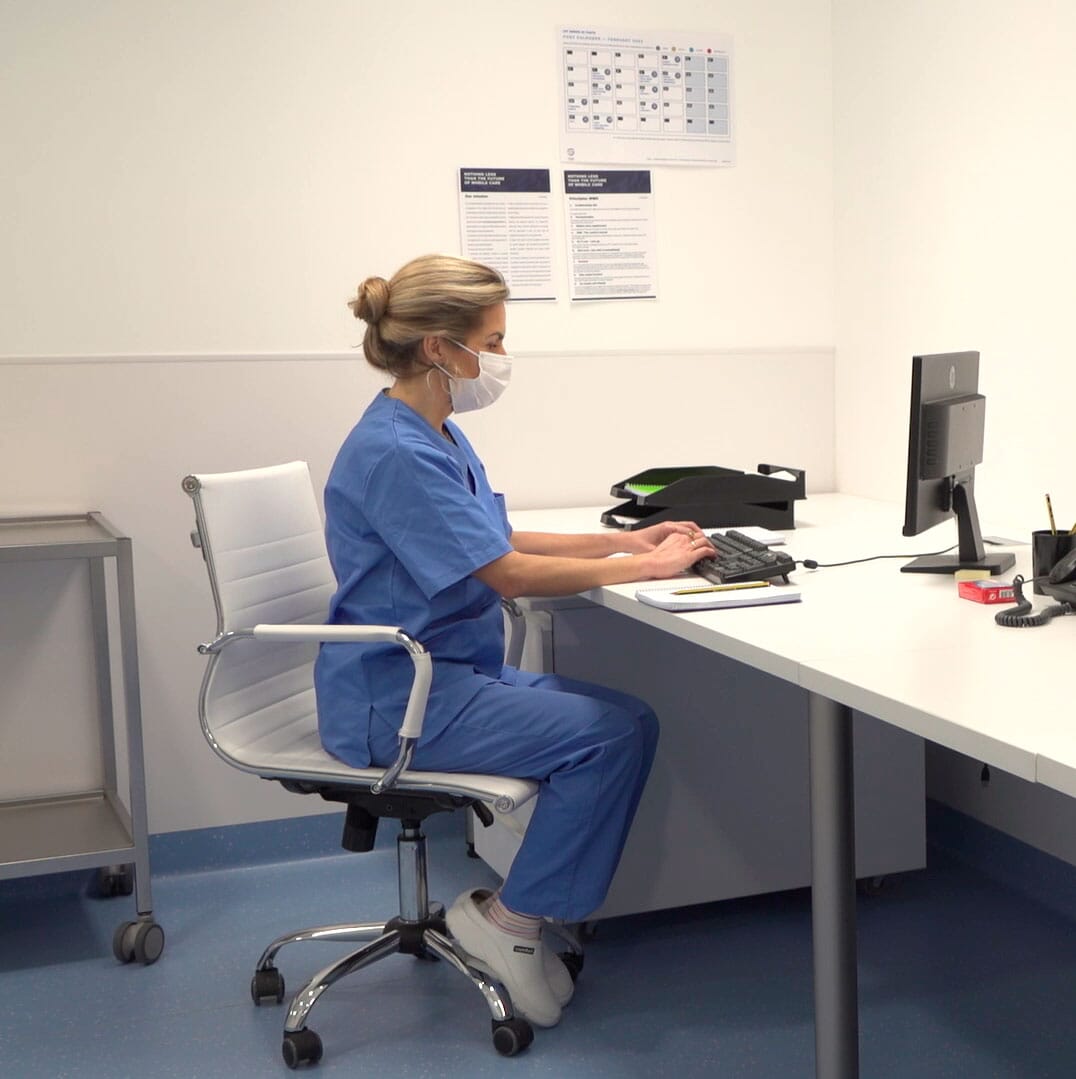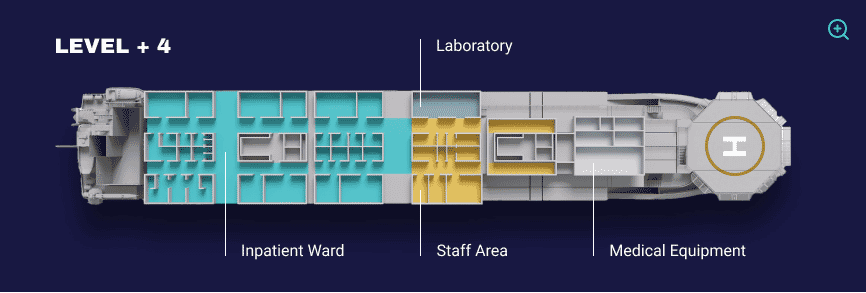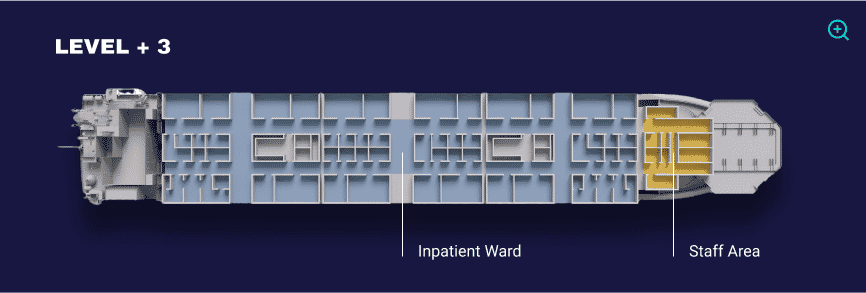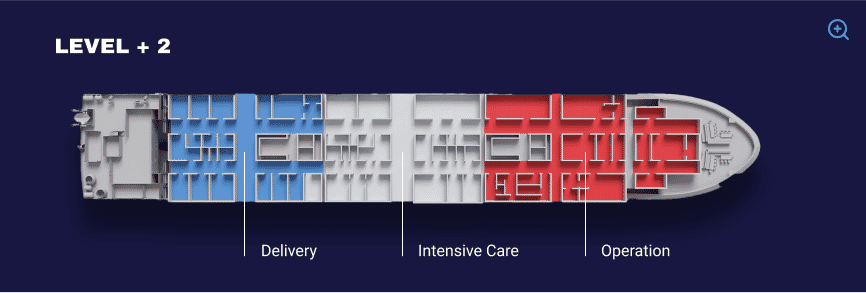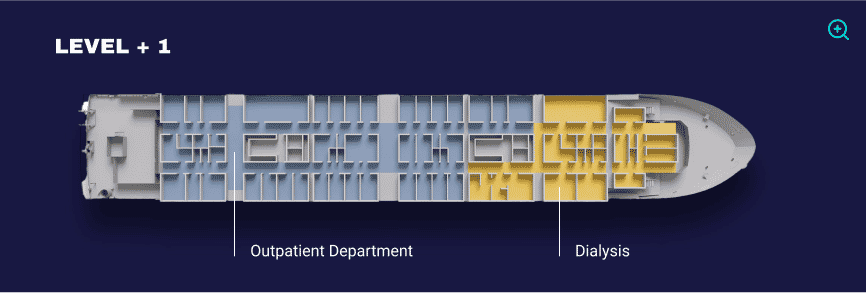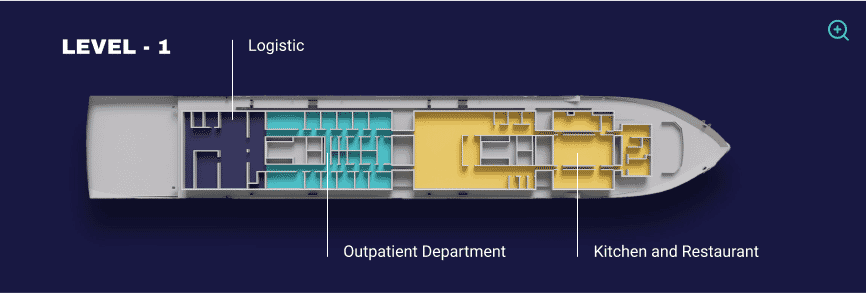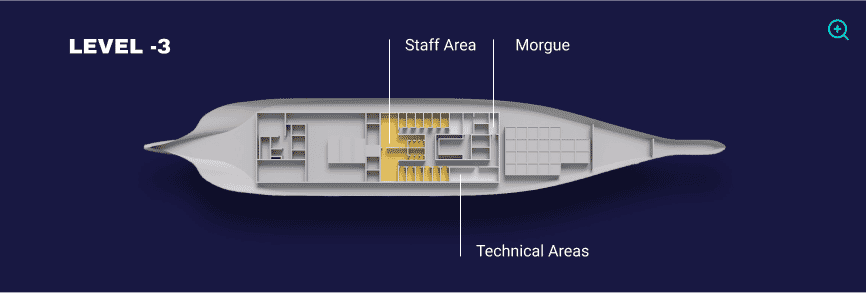BREAKING NEWS:
The future of
modular hospitals
Our mission as a global healthcare company is to provide flexible modular hospital solutions at the highest medical standard, wherever and whenever needed in the world.
Healthcare for all: We aspire to a world where barriers of location, infrastructure, capacity, and response time no longer mean obstacles to accessing qualified healthcare for every person, family, and community.
Team work: We work together with governments, international organizations, NGOs, and private charities to achieve that mission.
Modular hospitals
Using our Very High-Cube Heavy Duty (VHCHD) & High-Cube Heavy Duty (HCHD) Medical Modules as building blocks to form hospitals on ships or land.
Customized services
Our services are tailored to the client’s requirements: in case of emergency or as long-term solutions.
All-in-One
Our holistic offers include project consulting, healthcare system design, transportation, implementation, operation, maintenance, storage, and trainings.
Our medical modules
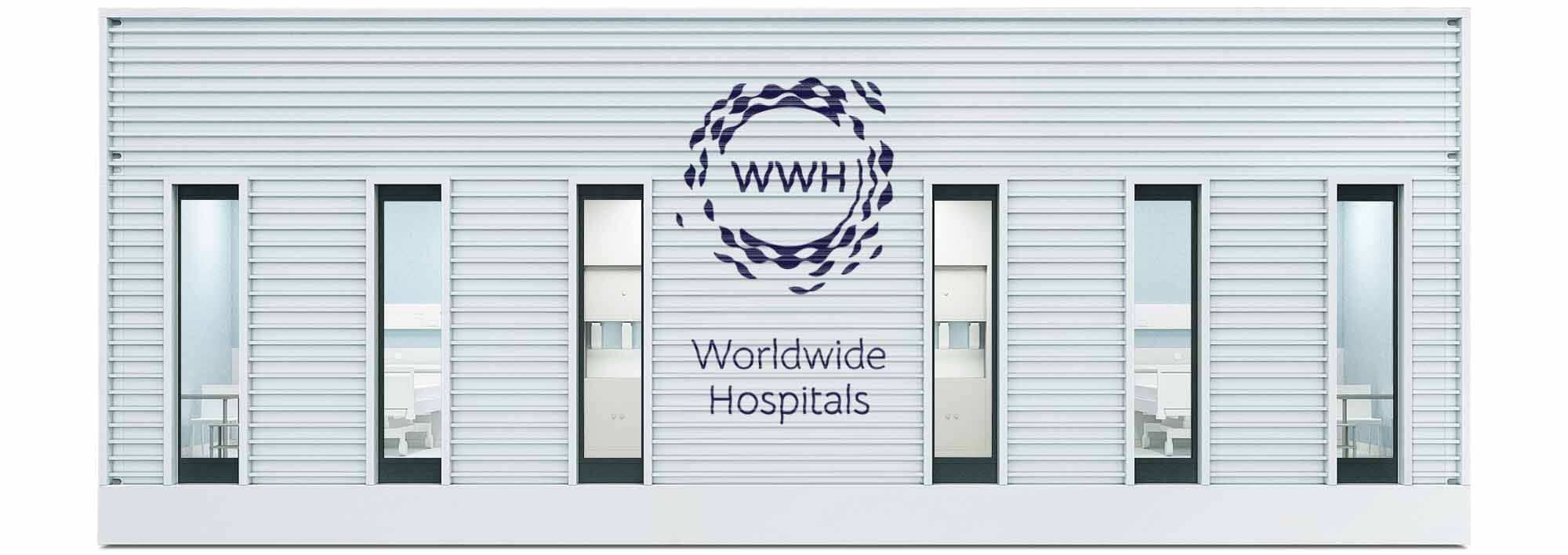
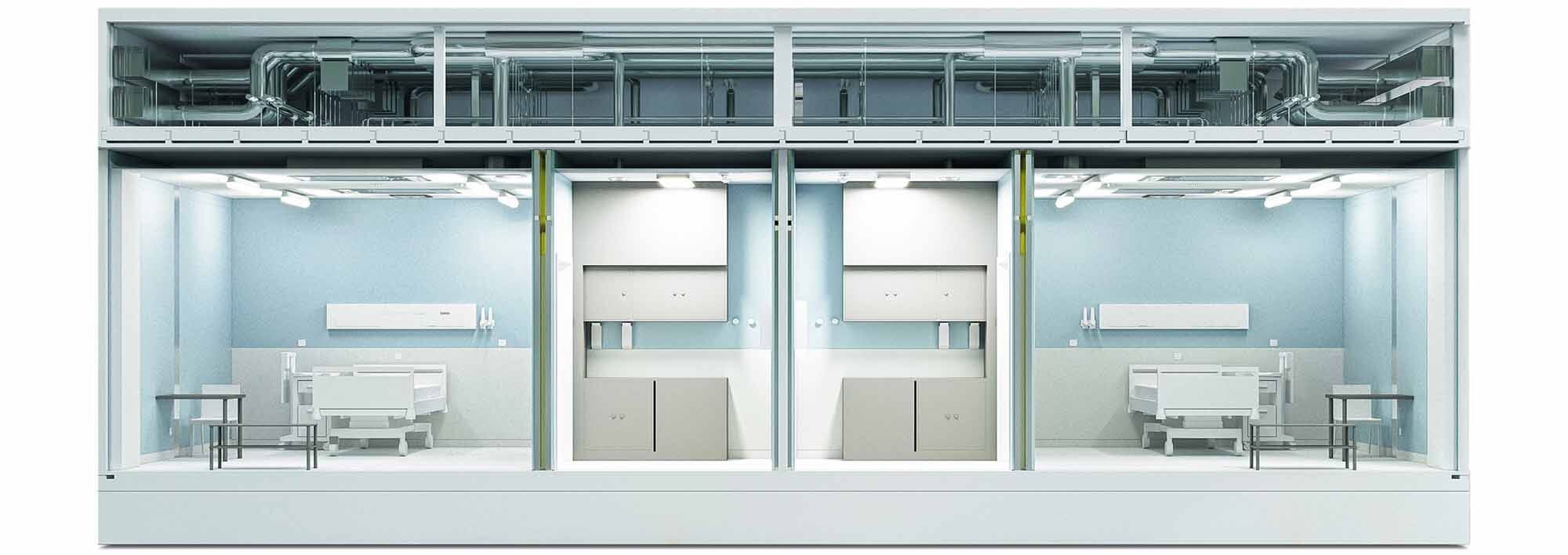
3D Rendering of an Equipped 30 m² / 300 ft² Very High-Cube Heavy Duty (VHCHD) Medical Module
Durable
With a lifespan of 50 years, our high-quality Medical Modules are durable and allow adaptability for future changes, minimizing replacement waste and reconstruction.
Weather resistant
Our Medical Modules are built to withstand various weather conditions. They are resistant to moisture, extreme temperatures, sunlight, and other environmental factors.
Fully-Equipped
Our Medical Modules are fully-equipped with compliant ventilation and cooling systems and can include advanced medical equipments X-Ray, Ultrasound and CT scans.
Customizable
Optional integration of solar panels, eco-friendly platforms, rainwater collector, ballistic protection, variable roof options, different facades, and much more.
Sustainable
Using our Medical Modules as building blocks instead of the traditional building process reduces CO₂ emissions due to the absence of cement during construction.
Aseptic
Our Medical Modules provide a safe and controlled environment for performing critical procedures and contributing to the overall success of medical systems.
Our medical Solutions
01 Land-based Hospitals
Transported via trucks or vessels to the land destination, VHCHD Medical Modules quickly set up WWH Land-based Hospitals using our distinctive Click-and-Connect Systems.
Expandable: vertically up to 4 levels and horizontally on all four sides, enabling the creation of healthcare facilities customized to the client's desired size.
Adaptable: to all on-site and climate circumstances and can be effortlessly relocated once their initial mission is accomplished.
Cost-competitive: saving production and assembly costs because our hospitals can be set up in a fraction of the time required for traditional construction.
02 Modular Hospital Ships
With HCHD Medical Modules, we turn the WWH vessels into fully-fledged Hospital Ships, which serve as an afloat and flexible platform that delivers advanced medical care and support where traditional medical facilities are lacking in case of an emergency.
Spacious: with an impressive 9,300 m² / 100,105 ft² of hospital space across seven floors, offering a generous environment with quality.
Quick-response: within just 72 hours, the hospital ship is fully assembled and ready to reach their missions worldwide.
Autonomous: can operate autonomously for over 60+ days without refueling, playing a vital role in humanitarian missions, epidemic outbreaks, refugee crises, and other critical situations.
03 Military Modular Hospitals
WWH offers ready-configured Military Hospitals, according to NATO standards and guidelines of the German Armed Forces Contractor Augmentation Program (G-CAP III). We offer the following Military Hospitals:
Role 1: Initial care, first aid, rapid stabilization.
Role 2B: Basic surgical care and advanced stabilization.
Role 2E: Expanded surgical capability, with diagnosis and short-term hospitalization.
Role 3: Fully functional hospital with long-term hospitalization and advanced treatment capabilities.
Ballistic protection
Our solutions adhere to the stringent standards of STANAG 2280, covering all protection classes: A, B, C, and D, providing security against a wide range of ballistic threats.
SIDE-VIEW OF A SINGLE VHCHD MEDICAL MODULES WITH DIFFERENT POSSIBLE LEVELS OF BALLISTIC PROTECTION
/Security_Level_1.jpg)
Security level 1 of 5
/Security%20Level%205.jpg)
Security level 5 of 5
04 Service Options
Medical, technical, and administrative services from full-service hospital operations to infrastructure maintenance only – whatever the customer requires.
Medical Professionals: sourcing of Medical Staff such as doctors, nurses and technicias worldwide.
Training and mentoring: General Training of Staff and Targeted Training on specific topics.
Hospital Operation and Logistics: we offer Operations Consulting, Hospital Management, Information Technology (IT) Support, Facility Maintenance, Transportation, Logistics, and Storage.
Advantages of WWH Ships
Click on the hotspots of our ships' model to discover more insights
General Hospital Ship Configuration
Hospital space: 9.300 m²/100.105 sq. ft
111 Inpatient Beds
(including 12 specialized ICU beds)
3 Operating Rooms
(one located in the Delivery Ward with Neonatal Resuscitation)
32 Outpatient Examination Rooms
(including specialized rooms for Dental, Ophthalmology and ENT)
Radiology Suite
(with Digital X-ray, CT Scan and Ultrasound)
Dialysis Unit
Negative-pressure Isolation
Outpatient and Emergency visits
Inpatient Admissions
Surgical procedures
Fast
Prefabricated in Europe, transportation-ready for land and sea, quick to assemble.
Flexible
Expandable in height and area; deployable in all circumstances; easy to operate and relocate.
Fit for Purpose
Customized to clients’ needs; adaptable to emergency, temporary, and long-term requirements.
Production Facilities
Innovation Center
We produce our VHCHD & HCHD Medical Modules according to the highest medical standards. Strategically located, our facility serves also as an innovation center for exhibitions.
Factory in Spain: located in Seville, we provide 200+ jobs by building our VHCHD & HCHD Medical Modules.
We explore technologies to easily adapt to the specific needs of each project.
Our factory Cameleon Modules S.L. is producing up to 30.000 m² aseptic hospital space per year.
Manufacturing Complex
Strategically located nearby our Headquarters South, our manufacturing center will offer up to 600+ jobs, leaving an impact on the local economy.
Factory in Serbia: Our 39.000 m² facility was recently completed and will produce up to 230.000 m² of aseptic hospital space per year.
It will have capacity for > 6.000 fully equipped and ready for use VHCHD & HCHD Medical Modules p.a.
Video resources
Let's get in touch
Together we can change the future of healthcare worldwide.
